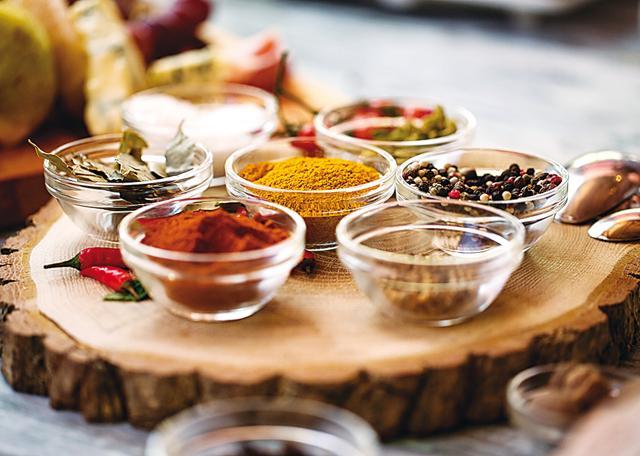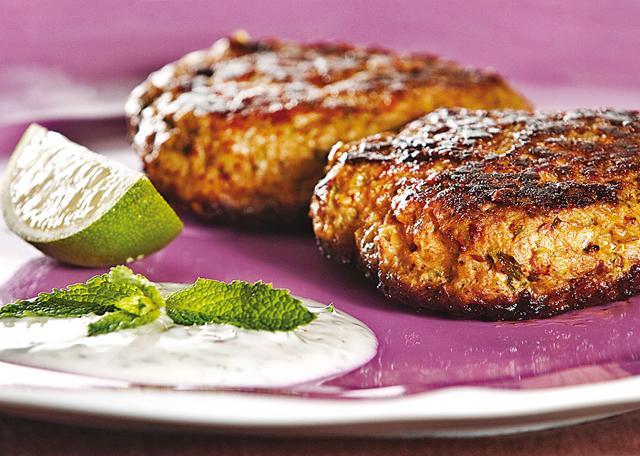Many years ago, I wrote that some of the food of Central Asia and the Middle East was a rough draft for Indian cuisine. This led to (understandable) outrage and claims that I had ignored the contribution of foreign visitors of our cuisine.
What about kebabs, I was asked? Weren’t they a Middle-Eastern invention? What about the samosa? Arabs brought it to India and variations of the original samosa (under such names as sambusak) can still be found all over West Asia.
And then there was the big one: pilaus.
Didn’t I realise that the first pilaus came from Turkey and other Middle Eastern countries? Why was I going on and on about biryani’s Indian flavours when it was clear that the dish came to India with Arab armies? And so on.
My answer has always been that while I have huge respect for the cuisines of West Asia, they have always struck me as lacking the depth of Indian cuisines. (Yes, yes: I concede that I haven’t travelled through the whole of the Middle East and that, as an Indian, I am not exactly an unbiased or disinterested observer.)
I do not dispute that samosas, kebabs and pilaus came to India from the Middle East. (Though biryani, I think, was our own creation.) But I believe that these dishes were raised to the next level of complexity and sophistication because of India’s secret ingredient.
Spice.

Any Indian who eats a Middle Eastern kebab or pilau will find it bland and unsophisticated because it will not have the complicated spice flavours that are the hallmark of good Indian food. My view is that yes, these dishes came to us from West Asia but it was India’s spice magic that raised them to another level entirely.
Great Indian food is all about spices. Do you know of any other country where so many of the great chefs will refuse to part with the secret spice mixture that goes into each dish?
It’s not just kebabs and pilaus. Go to any traditional restaurant anywhere in India and you will never be able to get the chefs to reveal what the exact proportion of masalas is. When fancy restaurants hire traditional chefs, they are shocked to discover that the chefs will make their masala mixes at home and will come to the kitchen with little packets of ready-made spice mixes.
Nor is this restricted to North Indian food. I once shot a TV programme at Muthu’s Curry, the famous fish head curry restaurant in Singapore. It turned out that only a few members of the founding family knew the exact proportion of masalas that went into the curry. Each morning, a family member would come and make the curry masala in secret. The cooks would have to use that masala and would never learn what it was that made the famous curry so special.

Take away the spices and most Indian food loses its distinctive identity. The reason why a Turkish pilau pales before a Lucknawi pilau is because the man who made the Lucknawi dish used spices. Compare any minced meat kebab from the Middle East to a shami kebab (let alone a galouti or a kakori) and the Indian kebab will always have a more complex taste because the Indian kebabchi has used complex spicing.
Many people in the Middle East (and the West) disagree violently with me. Some suggest that I am making too much of the spice factor. If a pilau has meat and rice, then surely it is the same dish everywhere, even if the Indian version has a little more spice, they argue.
So I was relieved last week to meet up with Dr Ganesh Bagler who has spent many years researching the science of Indian food along with many enthusiastic and gifted students and collaborators.

Dr. Bagler specialises in flavour molecules. This is an area of great interest to the food industry, though not one that interests most chefs. But the chefs who have studied it (such as Heston Blumenthal) have come to some interesting conclusions.
When we taste say, a strawberry, we are actually tasting hundreds of different flavour compounds that combine to give the strawberry its characteristic taste. This fascinates the food industry, which tries to isolate the molecules that make up these compounds. Then it merges many of these molecules in a lab to create the strawberry flavour that goes into say, your strawberry ice cream.
Some of these molecules are at the heart of what we regard as strawberry flavour. For instance, if you mix ethyl butyrate, cis-3-hexenol, furaneol and gamma-decalactone, then these four molecules will give you the essence of a strawberry taste even though a real strawberry has many more flavour molecules. (OK. No more technical stuff after this, I promise.)
All ingredients can be broken down into flavour molecules. Research suggests that most Western recipes combine ingredients that contain common flavour molecules. For instance, asparagus and butter go well together because they share many flavour molecules.
Often these similarities extend to ingredients that would appear to have nothing in common. Modern chefs make dishes that mix strong blue cheese with chocolate, a combination that sounds wrong at an intuitive level. In fact, the two ingredients share 73 flavour molecules and work well together. A more famous example is white chocolate with caviar, which sounds bizarre. But Heston Blumenthal, who found that the two paired well, had them analysed and discovered that they had many flavour molecules in common.
We know, thanks to the work of Yong-Yeol Ahn at Harvard University that while Western recipes are based on combining ingredients with similar (or the same) flavour molecules, East Asian cuisine is the exact opposite. In Korea and Thailand, for instance, recipes focus on combining ingredients that have few (if any) flavour molecules in common. It is the contrasting flavours that make the cuisine so distinctive.
As far as I knew, nobody had done similar work in India. But Dr. Bagler has followed roughly the same methodology as the Harvard team and has analysed Indian recipes. He has come to several interesting conclusions.
The first is that Indian recipes do not follow the Western pattern. We choose ingredients that do not share flavour molecules.
Secondly, if you were to list out the ingredients that determine flavour, there are many regional variations in India. But one thing is common across the subcontinent. The key determinants of flavour (like the four molecules that give the strawberry its essential taste) are spices. Even a tiny bit of spice will determine how a dish can taste. Take away the little dash of spice and keep all the other ingredients intact and the dish will taste totally different.
Here at last is scientific proof of what I have long believed at an intuitive level: Indian food is about spices. The quantity of masala in a pilau may be one-fiftieth of the quantity of rice. But the dish gets its distinctive flavour from the spice.
The Harvard team led by Ahn concluded that a few foods become the key signatures of a cuisine. In North America, these include dairy (milk, butter, cream), eggs and wheat. In Korea, they are ingredients like beef, ginger, pork, onion, soya sauce and rice.
Dr. Bagler says that in India, these key ingredients would just be spices. No matter which regional cuisine he studied, spice (to varying degrees) became the defining factor.
Which takes us back to the origins of pilau and kebab. When we say that the basic ingredients of the Middle Eastern kebabs and the Indian versions are broadly similar, we are right. But that, as research has now conclusively demonstrated, is not the key determinant of taste.
It is the flavour molecules that determine the taste. And the spice mixes in our kebabs and pilaus are uniquely Indian.
But I wish I knew more about the flavour molecules in Middle Eastern food. Does the cuisine – like Western food – rely on recipes that combine ingredients with the same flavour molecules? Or is it like Indian food where the opposite is true? The Middle East has its own herbs and spices. How important are those flavour compounds to the final taste? I looked at the research but found nothing about Middle Eastern food.
But, thanks to Dr. Bagler, we do have research about Indian food. And it tells us that there is no Indian food without spices.And once our spices take over, then all dishes, no matter where they originally came from, become distinctively Indian.
From HT Brunch, April 22, 2018



